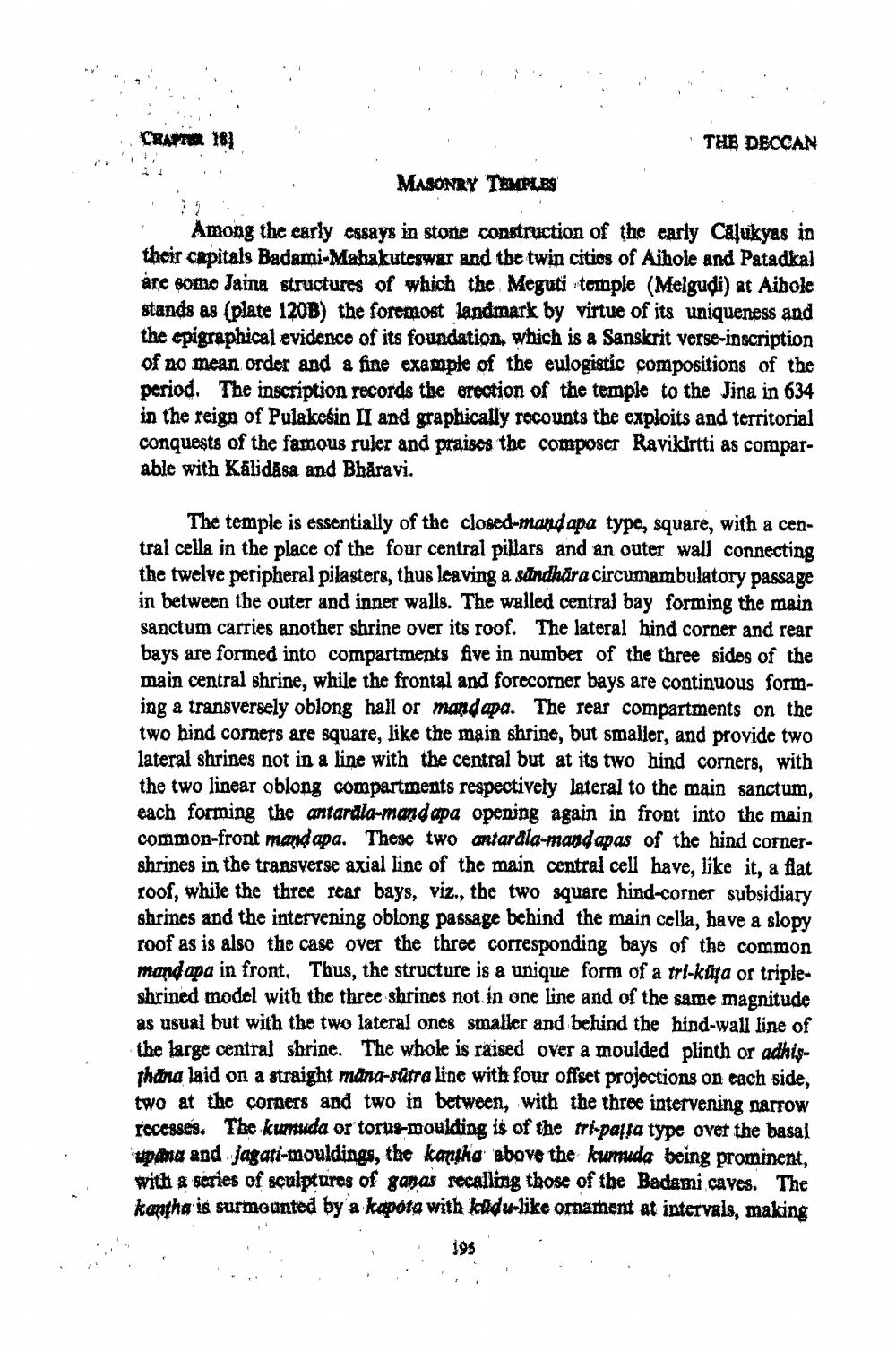________________
THE DECCAN
MASONRY TEMPLES
Among the early casays in stone construction of the early Calukyas in their capitals Badami-Mahakuteswar and the twin citios of Aihole and Patadkal are some Jaina structures of which the Meguti temple (Melgudi) at Aihole stands as (plate 120B) the foremost landmark by virtue of its uniqueness and the epigraphical evidence of its foundation, which is a Sanskrit verse-inscription of no mean order and a fine example of the eulogistic compositions of the period. The inscription records the erection of the temple to the Jina in 634 in the reign of Pulakesin II and graphically recounts the exploits and territorial conquests of the famous ruler and praises the composer Ravikirtti as comparable with Kalidasa and Bharavi.
The temple is essentially of the closed-mand apa type, square, with a central cella in the place of the four central pillars and an outer wall connecting the twelve peripheral pilasters, thus leaving a sandhära circumambulatory passage in between the outer and inner walls. The walled central bay forming the main sanctum carries another shrine over its roof. The lateral hind corner and rear bays are formed into compartments five in number of the three sides of the main central shrine, while the frontal and forecorner bays are continuous forming a transversely oblong hall or mand apa. The rear compartments on the two hind corners are square, like the main shrine, but smaller, and provide two lateral shrines not in a line with the central but at its two hind corners, with the two linear oblong compartments respectively lateral to the main sanctum, each forming the antardla-mand apa opening again in front into the main common-front mand apa. These two antarala-mand apas of the hind cornershrines in the transverse axial line of the main central cell have, like it, a flat roof, while the three rear bays, viz., the two square hind-corner subsidiary shrines and the intervening oblong passage behind the main cella, have a slopy roof as is also the case over the three corresponding bays of the common mand apa in front. Thus, the structure is a unique form of a tri-küta or tripleshrined model with the three shrines not in one line and of the same magnitude as usual but with the two lateral ones smaller and behind the hind-wall line of the large central shrine. The whole is raised over a moulded plinth or adhisthing laid on a straight mana-sutra line with four offset projections on each side. two at the corners and two in between, with the three intervening narrow roccoses. The kunuda or torus-moulding is of the tri-pasta type over the basal upana and jagati-mouldings, the kanske above the kumuda being prominent, with a series of sculpturos of ganas recalling those of the Badami caves. The kantha is surmounted by a kapota with kidu-like ornament at intervals, making




